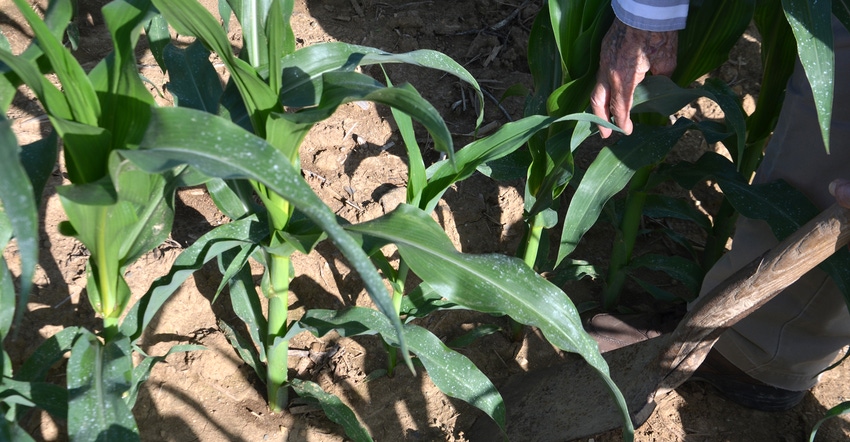August 1, 2022

We flagged corn emergence. In one field, corn all came up within three days, and in the other field, within a week. We left the flags. What could we learn by checking those spots now?
The Indiana certified crop adviser panelists answering this question include Steve Gauck, regional agronomy manager for Beck’s, Greensburg; Andy Like, agronomist with the Evansville AgriSelect LLC, Vincennes; Dan Quinn, Purdue Extension corn specialist, West Lafayette; and Dan Ritter, central region agronomist for Dairyland Seed, based near Rensselaer.
Gauck: It’s interesting to walk fields flagged earlier in the season. Compare ear size and stalk diameter. Later-emerging plants will most likely have smaller ears. Ears should look normal but could have fewer kernels around or less kernel length. Plants will also have smaller stalk diameter.
Later-emerging plants play catch-up all year. They compete for sunlight throughout the year. Plants only a day or two behind in emergence should be comparable to the first plants that emerge, but the longer the time between emergence, the more difference you can see.
Think about what caused the difference in emergence. Are there changes you can make next spring to help increase the chance of more even emergence?
Like: Looking at those fields now that the ear is developed could show you some interesting things. I would expect corn that came up over a week would have variable ear sizes, since later-emerging plants would struggle to compete for light and moisture. In some way, they may act as a weed to adjacent plants.
Research shows that plants that emerge together and maintain the same growth stage typically yield more. This knowledge has led to many growers adding new technologies to their planters to get more even emergence.
Quinn: If you plan to leave flags in the field, harvest those ears by hand and combine all ears that correspond to each specific day of emergence. Once ears have been harvested by hand, you can hand-shell the corn, get a grain moisture reading and also weigh grain to get a yield estimate. Or you can just harvest ears by hand and observe any differences in ear size by row number and kernel number per row between the different days of emergence. This method will give you an idea of ear growth, size and potential yield differences between corn that emerged on different days.
Another fact to consider is that corn that emerges late and is two or more growth stages behind typically does not catch up. Those plants can result in lost yield. Overall, consistent and uniform plant emergence is an important factor for reaching high corn yields.
Ritter: There is always something to learn, even if you learn there’s nothing to learn. So, get back there and see what happened. As a general rule, everyone obviously wants to achieve perfectly timed emergence. I am in the camp that believes with a three-day difference in emergence, you shouldn’t see a huge difference. As you get to that week difference in emergence, you may see some differences.
Certainly, take the time to follow up. If plants are identified, use one of the handy apps on your smartphone to estimate yield of each plant. Or you can do this with a pencil, your favorite seed company spiral pad, calculator and mathematical formula. These should get you an idea of yield differences in emergence dates.
You May Also Like




